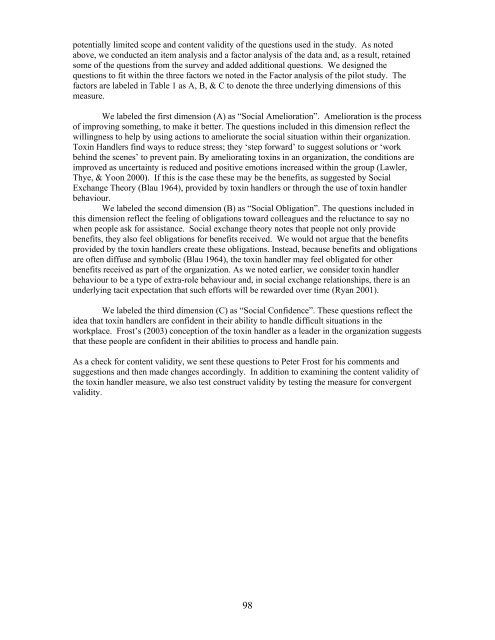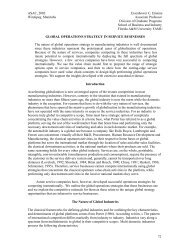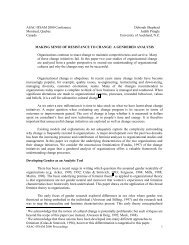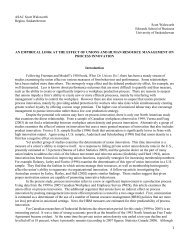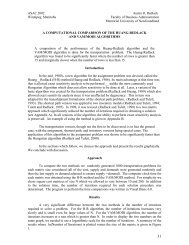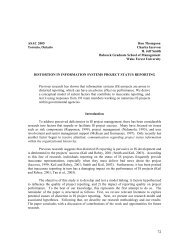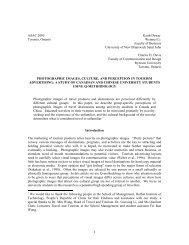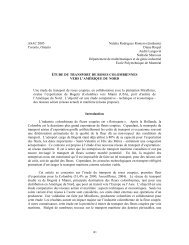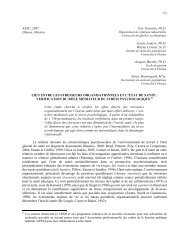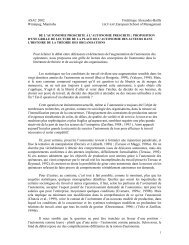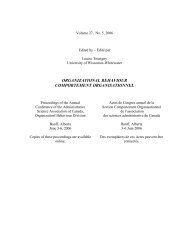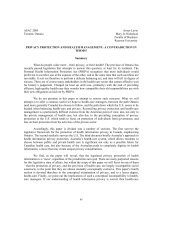Organizational Behaviour Comportement Organisationnel
Organizational Behaviour Comportement Organisationnel
Organizational Behaviour Comportement Organisationnel
Create successful ePaper yourself
Turn your PDF publications into a flip-book with our unique Google optimized e-Paper software.
potentially limited scope and content validity of the questions used in the study. As notedabove, we conducted an item analysis and a factor analysis of the data and, as a result, retainedsome of the questions from the survey and added additional questions. We designed thequestions to fit within the three factors we noted in the Factor analysis of the pilot study. Thefactors are labeled in Table 1 as A, B, & C to denote the three underlying dimensions of thismeasure.We labeled the first dimension (A) as “Social Amelioration”. Amelioration is the processof improving something, to make it better. The questions included in this dimension reflect thewillingness to help by using actions to ameliorate the social situation within their organization.Toxin Handlers find ways to reduce stress; they ‘step forward’ to suggest solutions or ‘workbehind the scenes’ to prevent pain. By ameliorating toxins in an organization, the conditions areimproved as uncertainty is reduced and positive emotions increased within the group (Lawler,Thye, & Yoon 2000). If this is the case these may be the benefits, as suggested by SocialExchange Theory (Blau 1964), provided by toxin handlers or through the use of toxin handlerbehaviour.We labeled the second dimension (B) as “Social Obligation”. The questions included inthis dimension reflect the feeling of obligations toward colleagues and the reluctance to say nowhen people ask for assistance. Social exchange theory notes that people not only providebenefits, they also feel obligations for benefits received. We would not argue that the benefitsprovided by the toxin handlers create these obligations. Instead, because benefits and obligationsare often diffuse and symbolic (Blau 1964), the toxin handler may feel obligated for otherbenefits received as part of the organization. As we noted earlier, we consider toxin handlerbehaviour to be a type of extra-role behaviour and, in social exchange relationships, there is anunderlying tacit expectation that such efforts will be rewarded over time (Ryan 2001).We labeled the third dimension (C) as “Social Confidence”. These questions reflect theidea that toxin handlers are confident in their ability to handle difficult situations in theworkplace. Frost’s (2003) conception of the toxin handler as a leader in the organization suggeststhat these people are confident in their abilities to process and handle pain.As a check for content validity, we sent these questions to Peter Frost for his comments andsuggestions and then made changes accordingly. In addition to examining the content validity ofthe toxin handler measure, we also test construct validity by testing the measure for convergentvalidity.98


